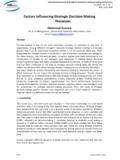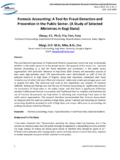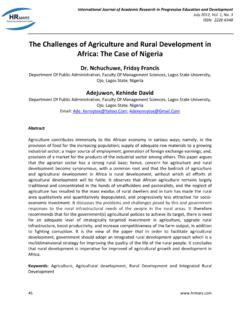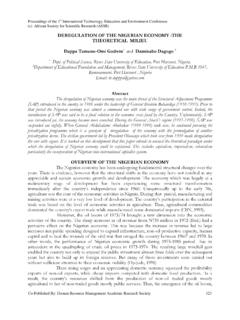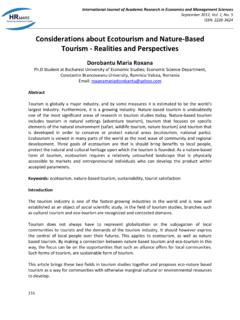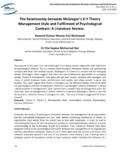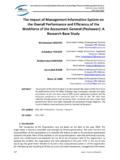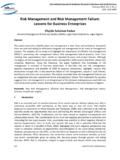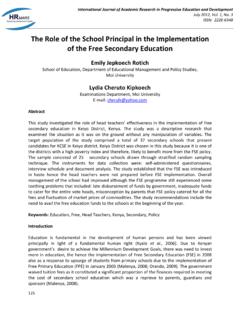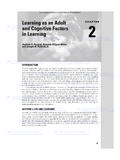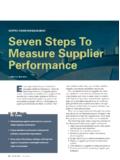Transcription of Critical Success Factors of Total Quality …
1 International Journal of Academic Research in Business and Social Sciences December 2012, Vol. 2, No. 12 ISSN: 2222-6990 19 Critical Success Factors of Total Quality Management Implementation In Higher Education Institution: A Review Norhayati Zakuan Faculty of Management and Human Resource Development, Universiti Teknologi Malaysia, 81310 Skudai, Johor, Malaysia Shalini Muniandy Faculty of Management and Human Resource Development, Universiti Teknologi Malaysia, 81310 Skudai, Johor, Malaysia Muhamad Zameri Mat Saman Department of Manufacturing & Industrial Engineering, Faculty of Mechanical Engineering, Universiti Teknologi Malaysia, 81310 Skudai, Johor, Malaysia Mohd Shoki Md Ariff Faculty of Management and Human Resource Development, Universiti Teknologi Malaysia.
2 81310 Skudai, Johor, Malaysia Sapiah Sulaiman K-Economy Research Alliance, Research Management Centre, UTM Rozita Abd Jalil K-Economy Research Alliance, Research Management Centre, UTM Abstract This paper determines the research area of Critical Success Factors of Total Quality management (TQM) implementation in higher education institutions which has potential to be explored and generate new knowledge, to improve the Total Quality management practices and outcome especially in higher education institutions. This paper has reviewed all the literature which is relevant to Critical Success Factors of Total Quality management (TQM) and its implementation in various areas.
3 The review is focused on the implementations, the impacts on the organization s performance and the encouraged indicators to the adoption of Total Quality management (TQM) in the organization. This study concludes the Critical Success Factors of Total Quality management (TQM) and its implementation in higher education institutions. Because of lack of identified reason, many organizations do not adopt TQM approach into their organization. However, certain organization and institutions already indentified the benefits from TQM implementations on their organization performance and they believe this approach International Journal of Academic Research in Business and Social Sciences December 2012, Vol.
4 2, No. 12 ISSN: 2222-6990 20 could give them a chance to achieving their goals. The findings of this paper are a proposed conceptual model which consists of TQM Critical Success Factors implementation and its impact of higher education institutions performance. Keywords: Total Quality Management (TQM), Higher Education Institutions, Organization Performance and Malaysia Introduction Total Quality management (TQM) is a way of managing to improve the effectiveness, efficiency, cohesiveness, flexibility and competitiveness of a business as a whole.
5 As defined by British Standard Institution, TQM consists of a management philosophy and company practices which aim to harness the human and material resources of an organization in the most effective way to achieve the objectives of the organization . Some researchers are skeptical of the idea of applying TQM to higher education institutions (HEI). For instance, Chaston (1994) has identified obstacles, which include insufficient trust between departments and low confidence levels of ability to manage the process: Under these circumstances, it does not appear that, for the foreseeable future, British universities are in a position to adopt TQM philosophy.
6 Paradoxically, however, HEIs, which research and teach TQM lack credibility if they decline to embrace the TQM philosophy and practices themselves. Because TQM is universal and proven by many successful firms, it should been used to formulate the mission statement for the services provided by HEI; a generic mission statement could be To provide Quality education, training, research and related services to consistently satisfy stakeholders needs and achieve excellence through TQM . Since incorporation in 1989, De Montfort University (DMU) has undergone an ambitious transformation, nearly trebling in size to 25,000 students and quadrupling its campuses.
7 It has become one of the largest universities in the UK and the fastest growing in Western Europe. One main objective of DMU is to unlock the creativity of academic staff to find ways of increasing productivity while maintaining Quality on declining resources. Fundamentally, schools (faculties) must live within their means, with cross subsidization only allowed for explicit strategic purposes . According to the reports of United Nations Educational, Scientific, Cultural Organizations (UNESCO) and the World Bank, social and private returns of the higher education are less than those of primary and secondary education.
8 It is estimated that social return of primary education is 25% while that of higher education is only 1%. This has led to the thinking that the returns of higher education are largely private and therefore, subsidy on this should be reduced. There are three generic approaches to Total Quality Management (TQM) in higher education (Harris, 1994). Firstly, there is a customer focus where the idea of services to student are fostered through staff training and development, which promotes student s choice and autonomy. The second approach has a staff focus and is concerned to value and enhance the contribution of all members of staff to the effectiveness of an institution s operation, to the setting of policies and priorities.
9 This entails a flatter management structure and the acceptance of responsibility for action by defined working groups. The third approach focuses on service agreements stance and seeks to ensure conformity to specification at certain key International Journal of Academic Research in Business and Social Sciences December 2012, Vol. 2, No. 12 ISSN: 2222-6990 21 measurable points of the educational processes. Evaluation of assignments by faculty within timeframe is an example. Sangeeta (2004) considers education system as a transformation process comprising of inputs of students, teachers, administrative staff, physical facilities and process.
10 The processes include teaching, learning, and administration. Output includes examination results, employment, earnings, and satisfaction. According to Roffe (1998), due to open competition, students are becoming more customers as well as consumers and expected to pay a growing share of the cost of education. This leads to competitive forces that generate different programmers for different student groups. The conceptual problems include whether TQM in higher education should be people or problem oriented, difficulty in introducing the application and acceptance of TQM in higher education institutions, which have not embraced tenets of TQM, team versus individual orientation towards TQM, and maintaining the rate of innovation amongst others.

